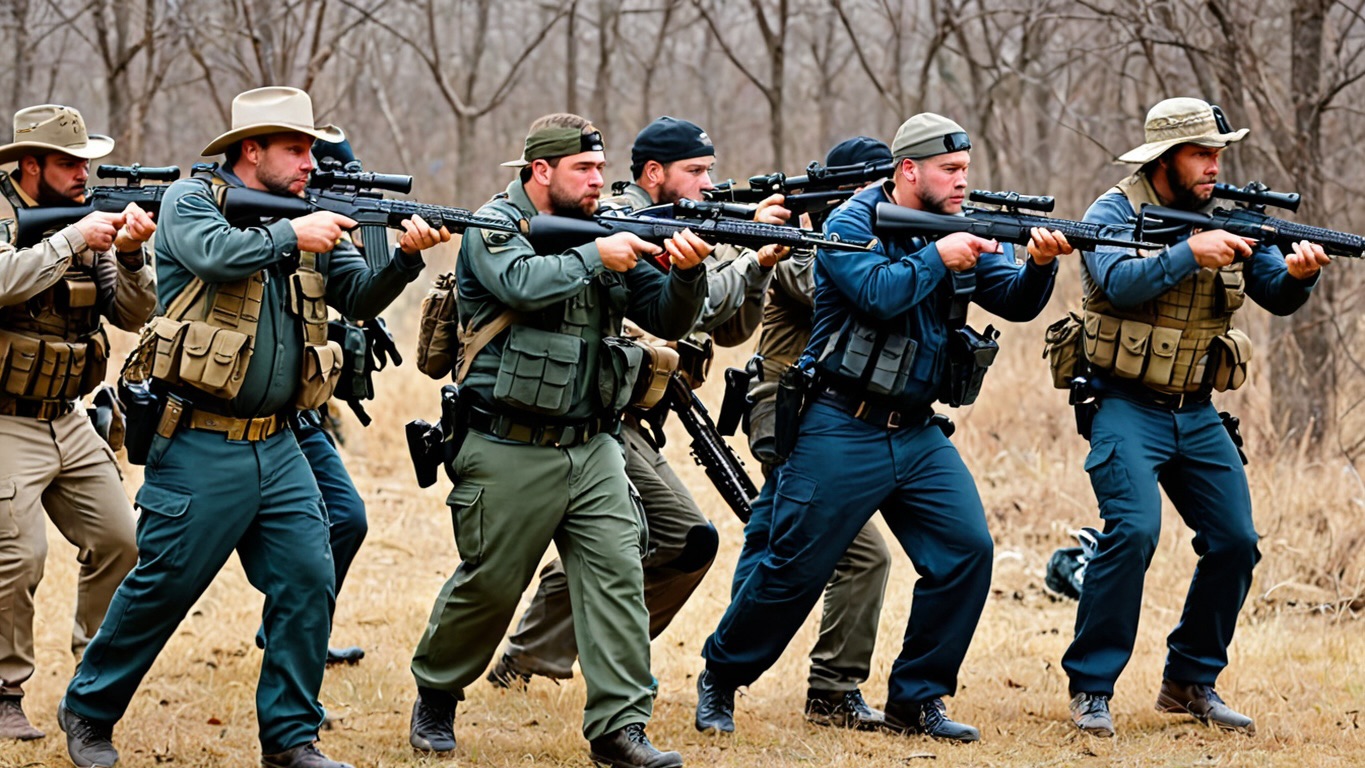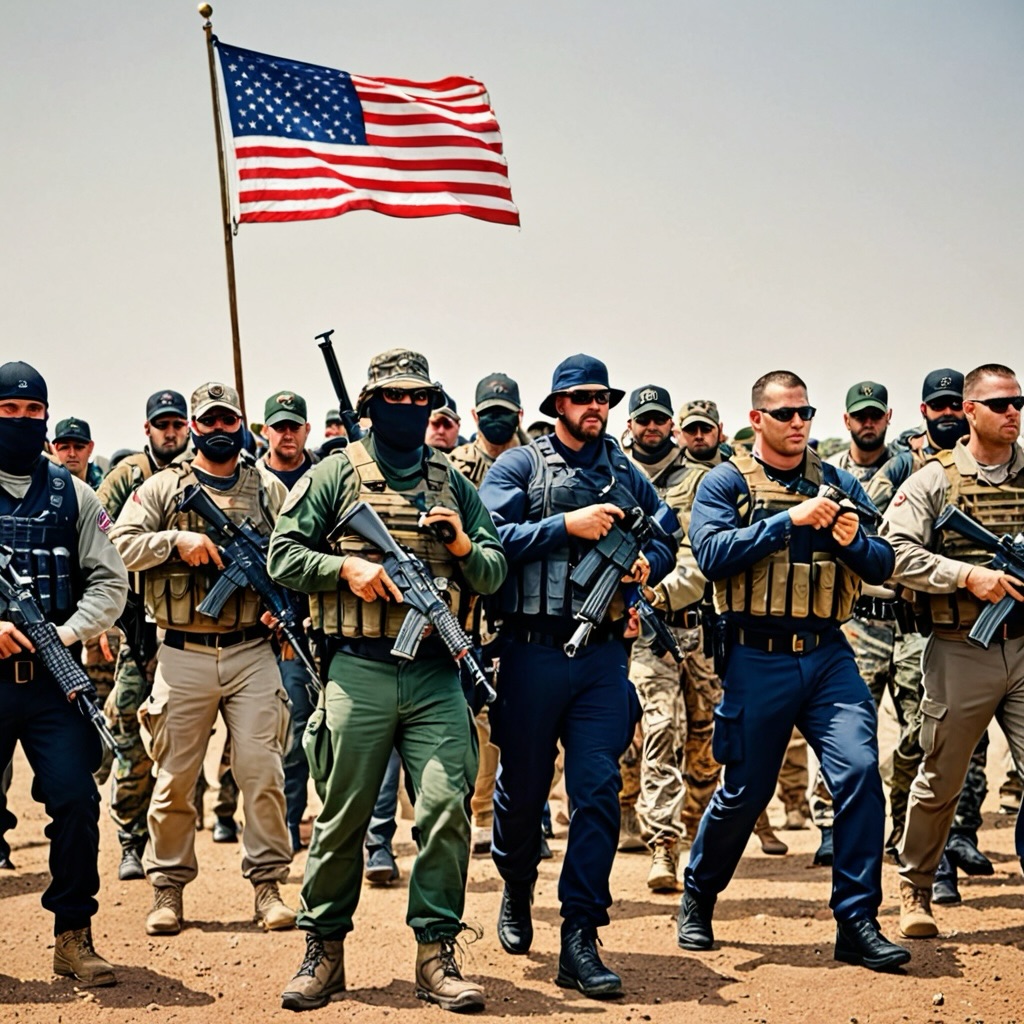
Post Title: Awake and Alert
Author: jmaynen
Date: 04/26/2000 1:58:24 PM
Does a president have the legal right to use force – to use guns to further
his political agenda and to create some sort of a positive legacy?
Apparently, there is quite a history of Presidents using armed force against
citizens not charged with any crimes.
This particular President orders the use of force here and abroad frequently.
Come on, folks. Speak up! Does the president have that power? Do you
want him to have that power? Is that the way you think this country should
work?
Yes. No. No.
The power to carry firearms has been granted, by statute, to:
the Treasury Department’s Inspector General for Tax Administration
(5 U.S.C. 8D);
designated employees of the Office of Inspector General of the
Department of Agriculture (7 U.S.C. 2270);
designated employees of the Department of Agriculture engaged in
animal quarantine activities (7 U.S.C. 2274);
Immigration and Naturalization Service employees (8 U.S.C. 1357);
civilian employees of the Department of Defense (10 U.S.C. 1585);
members of the Park Police (16 U.S.C. 1a-6);
designated employees of the Forest Service (16 U.S.C. 559c);
designated employees of the Department of Agriculture or
Department of the Interior (16 U.S.C. 670j);
designated employees of the Tennessee Valley Authority (16 U.S.C.
831c-3);
designated employees of the Department of the Interior, Department
of Transportation, or the Department of the Treasury (16 U.S.C.
3375);
employees of the Bureau of Prisons (18 U.S.C. 3050);
employees of the Federal Bureau of Investigation (18 U.S.C. 3052);
United States marshals (18 U.S.C. 3053);
Postal inspectors (18 U.S.C. 3061);
“law enforcement” personnel of the Environmental Protection Agency
(18 U.S.C. 3063);
federal pretrial services officers (18 U.S.C. 3154);
federal probation officers (18 U.S.C. 3603);
officers of the United States Customs Service (19 U.S.C. 1589a);
designated employees of the Department of Health and Human
Services (21 U.S.C. 372);
employees of the Drug Enforcement Agency (21 U.S.C. 878);
designated special agents of the Department of State (22 U.S.C.
2709);
law enforcement employees of the Bureau of Indian Affairs (25 U.S.C.
2803);
officers of the Bureau of Alcohol, Tobacco and Firearms (26 U.S.C.
7608);
the Marshal of the Supreme Court and the Supreme Court police (40
U.S.C. 13n);
designated employees of the General Services Administration (40
U.S.C. 318d);
employees, contractors, and subcontractors of the Atomic Energy
Commission (42 U.S.C. 2201);
contractors and subcontractors of the United States Enrichment
Corporation (42 U.S.C. 2297h-5);
designated employees, contractors, and subcontractors of the
National Aeronautics and Space Administration (42 U.S.C. 2456);
designated employees, contractors, and subcontractors of the
Department of Energy (42 U.S.C. 7270a);
federal law enforcement personnel with responsibilities respecting the
public lands (43 U.S.C. 1733);
personnel with air transportation security responsibilities (49 U.S.C.
44903);
designated Central Intelligence Agency personnel (50 U.S.C. 403f);
designated employees of the Office of Export Enforcement of the
Department of Commerce (50 U.S.C. App. 2411).
~
Several of these statutes not only authorize federal employees to carry
firearms, but also extend this authority to federal contractors and
subcontractors. This elastic concept could be useful.
Some historical incidents where Presidential orders resulted in armed
federal employees being sent to face fellow Americans:
South Carolina, 1871
During Reconstruction, without declaring martial law, President Grant sent
troops into nine counties of South Carolina (in 1871). This followed his
issuance of a proclamation by commanding residents “to deliver, either to
the marshal of the United States for the District of South Carolina, or to any
of his deputies, or to any military officer of the United States within said
counties, all arms, ammunition … used, kept, possessed or controlled by
them….” President Grant even suspended the writ of habeas corpus. More
than 600 arrests had been made by the end of 1871.
Idaho, 1899
On April 30, 1899, in response to a gubernatorial request, President
McKinley ordered federal troops to Idaho without issuing a presidential
declaration of martial law. Upon arrival, the troops “scrutinized” passengers
on local rail lines, detained suspected criminals, and eventually held
prisoners for several months awaiting trial in the local courts. The governor of
Idaho declared martial law on May 3, 1899.
Colorado, 1914
On April 28, 1914, President Wilson ordered infantry units into Colorado,
with orders to disarm all persons, including sheriff’s deputies, policemen,
and members of the Colorado National Guard. The army units were given the following orders:
The measure of your authority is what necessity dictates. State civil
functions and processes should not be displaced or interfered with
when they can be successfully employed in the suppression of
violence and the restoration of order. Persons arrested should
ordinarily be turned over to the proper State authorities as soon as
practicable. Should you find that State judicial procedure only results
in the release and return to the scene of disorder of persons whose
presence and conduct tend to prevent the restoration of normal
conditions, you may find it necessary to retain in military custody
those whom you arrest. Persons in military custody will be held
under authority of the United States and a writ of habeas corpus
issued from a State court should be met with a return declining to
produce in court the body of the prisoner on the ground that he is
held under the authority of the United States. In case of a writ issued
from a United States court you will obey the writ, produce the body of
the prisoner, and state in full the reason for restraint, reporting the
fact direct by telegram to The Adjutant General of the Army
California, 1992
On April 29, 1992, the acquittal of four police officers on a charge of beating
Rodney King in Los Angeles, California, resulted in riots which spread over
hundreds of square miles. The riots caused the deaths of at least 54 people,
and more than $800 million in property damage throughout Los Angeles
County.
On May 1, 1992, President Bush issued Proclamation 6427, commanding
“all persons engaged in such acts of violence and disorder to cease and
desist therefrom and to disperse and retire peaceably forthwith.” That same
day, he issued Executive Order 12804, which stated that:
Units and members of the Armed Forces of the United States and
Federal law enforcement officers will be used to suppress the
violence described in [Proclamation 6427] and to restore law and
order in about the City and County of Los Angeles, and other districts
of California.
Pursuant to this executive order, soldiers of the U.S. Army’s 7th Infantry
Division and Marines from Camp Pendleton were deployed in Los Angeles
beginning on May 3.
As expressed by the executive order, the role of federal troops was “to
restore law and order.” However, according to the deputy adjutant general of
the California National Guard, that mission “had been accomplished before
[the federal troops] arrived.”
